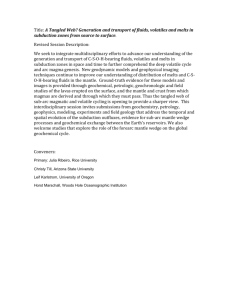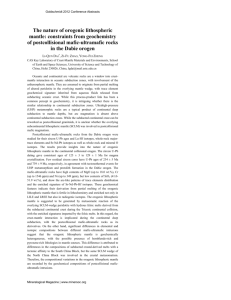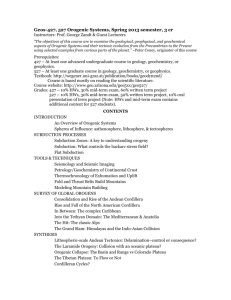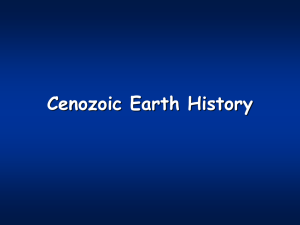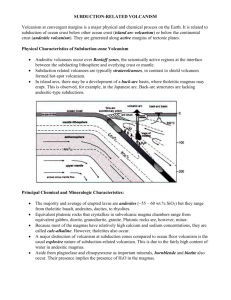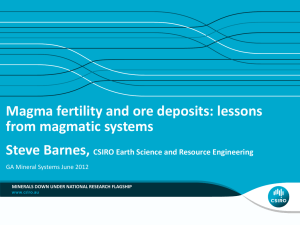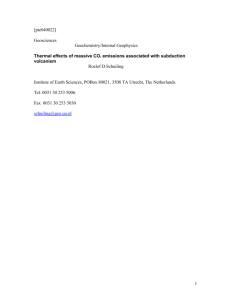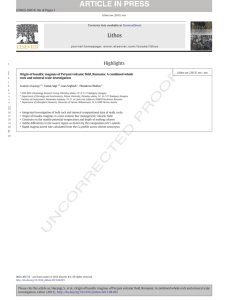rectina - Geolines
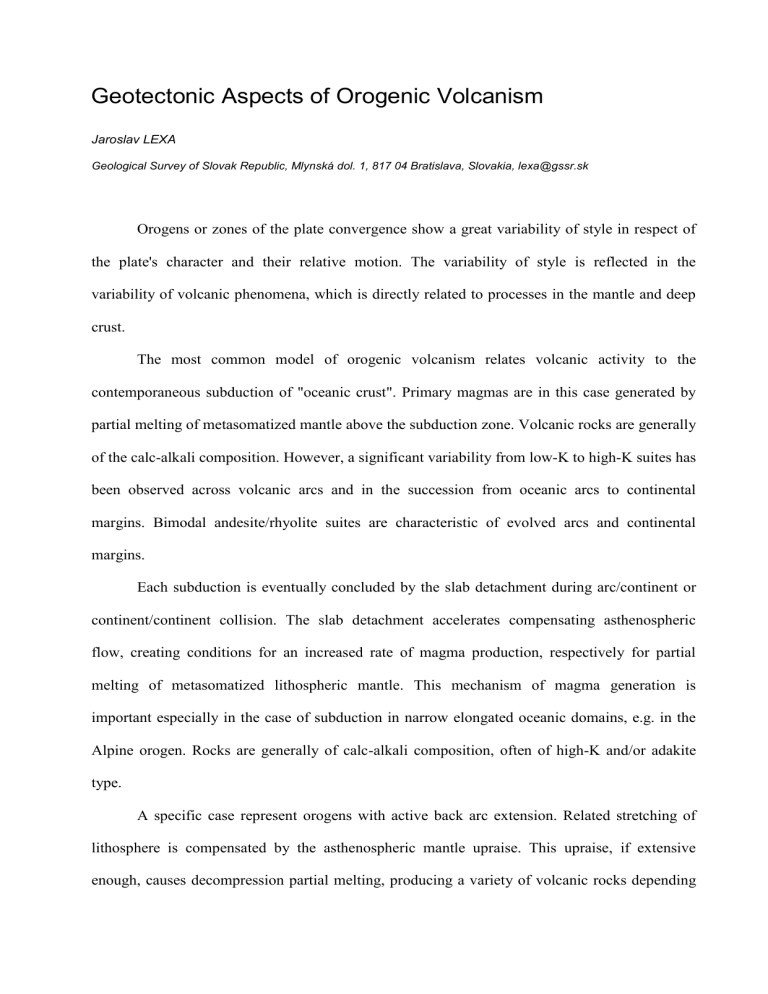
Geotectonic Aspects of Orogenic Volcanism
Jaroslav LEXA
Geological Survey of Slovak Republic, Mlynská dol. 1, 817 04 Bratislava, Slovakia, lexa@gssr.sk
Orogens or zones of the plate convergence show a great variability of style in respect of the plate's character and their relative motion. The variability of style is reflected in the variability of volcanic phenomena, which is directly related to processes in the mantle and deep crust.
The most common model of orogenic volcanism relates volcanic activity to the contemporaneous subduction of "oceanic crust". Primary magmas are in this case generated by partial melting of metasomatized mantle above the subduction zone. Volcanic rocks are generally of the calc-alkali composition. However, a significant variability from low-K to high-K suites has been observed across volcanic arcs and in the succession from oceanic arcs to continental margins. Bimodal andesite/rhyolite suites are characteristic of evolved arcs and continental margins.
Each subduction is eventually concluded by the slab detachment during arc/continent or continent/continent collision. The slab detachment accelerates compensating asthenospheric flow, creating conditions for an increased rate of magma production, respectively for partial melting of metasomatized lithospheric mantle. This mechanism of magma generation is important especially in the case of subduction in narrow elongated oceanic domains, e.g. in the
Alpine orogen. Rocks are generally of calc-alkali composition, often of high-K and/or adakite type.
A specific case represent orogens with active back arc extension. Related stretching of lithosphere is compensated by the asthenospheric mantle upraise. This upraise, if extensive enough, causes decompression partial melting, producing a variety of volcanic rocks depending
on the degree of partial melting and asthenospheric composition. A low degree of partial melting during the early stage of back arc extension creates alkali basalts, that are replaced by olivine tholeiites and MORB type basalts during transition to the newly formed back-arc basin. In the case of the back arc extension in the region of continental crust, basalt magmas are subject to underplating, creating conditions for generation of anatectic rhyolite magmas and characteristic bimodal basalt/rhyolite volcanism.
If the back arc extension affects asthenospheric mantle metasomatized by previous subduction processes (like is the case in the Carpatho-Pannonian region) volcanic rocks will be of the calc-alkali and/or adakite composition.A thick continental crust in the area of the back arc extension causes an early underplating and generation of anatectic rhyolite magmas. Later, as the crust is thinned progressively owing to the extension, rhyolite volcanism is substituted by the bimodal andesite/rhyolite association.
A specific geotectonic regime of the orogen is the late stage relaxation and/or orogenic collapse, generally associated with the extension environment and thermal rejuvenation. Mantle derived magmas invade orogen roots, giving rise to slightly alkali anatectic magmas (late orogenic A-type granites). Further evolution towards rifting and related bimodal volcanic activity is possible.


